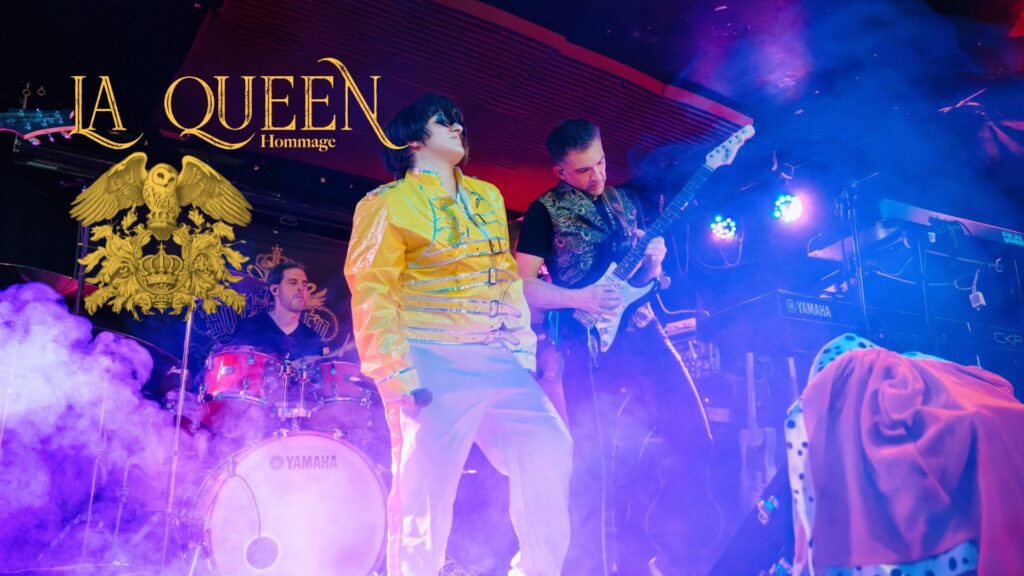
Before they became global rock royalty, Queen’s journey began with the intertwined aspirations of young musicians in west London during the late 1960s. It was a period of formation, experimentation, and relentless pursuit of an original sound, laying the groundwork for one of the most iconic bands in music history. The path was not always straightforward, marked by lineup changes, early struggles, and a fierce dedication to their unique artistic vision.
From academic pursuits to jam sessions, the members who would eventually form Queen converged through a series of fortunate encounters and shared musical ambitions. The band’s evolution from nascent groups like Smile to the classic quartet was a testament to their individual talents and collective drive to create something unprecedented. This initial period, often overlooked in the grand narrative of their success, was crucial in forging the bonds and artistic philosophies that would define Queen.
What follows is an exploration of Queen’s foundational era, delving into the key moments, albums, and decisions that propelled them from promising hopefuls to a band on the cusp of superstardom. We’ll examine the creative crucible where their legendary sound was forged, the albums that introduced them to the world, and the single that irrevocably altered the landscape of music videos and rock anthems.
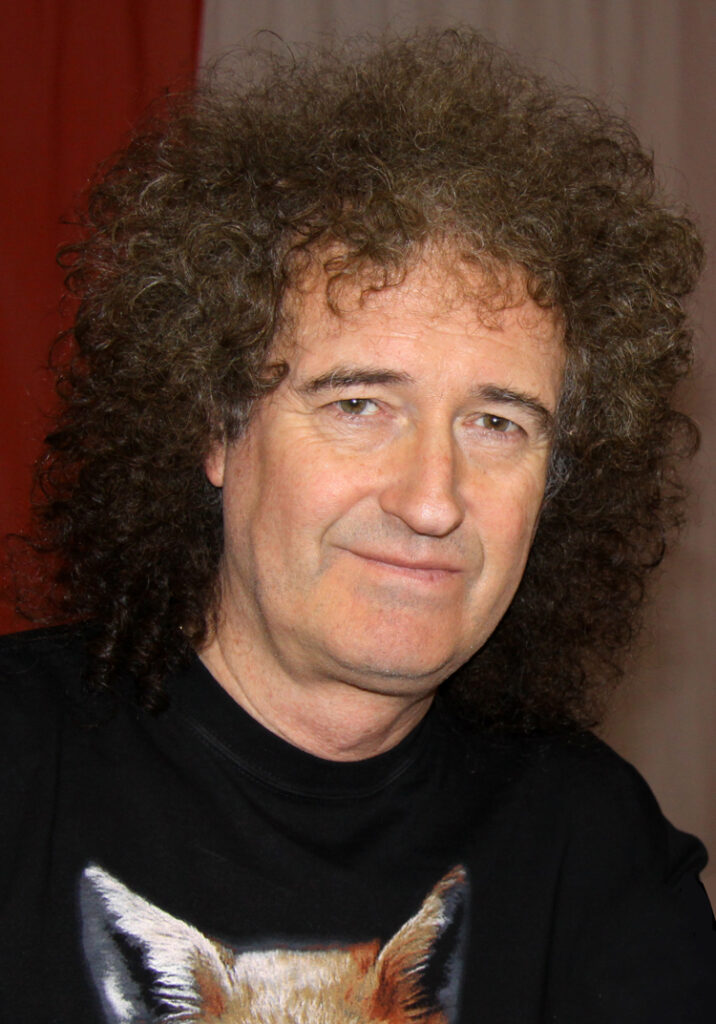
1. **The Genesis of a Legend: From Smile to Queen’s Founding Members (1968-1971)**The story of Queen truly begins with the individual paths of its founding members converging in west London. Brian May, a prodigious guitarist, had already built his own guitar in 1963 with his father. He formed the group 1984, named after Orwell’s novel, and later moved on to form Smile in early 1968. This group featured Tim Staffell on bass and Chris Smith on keyboards.
To complete the Smile lineup, May famously placed an advertisement on a college notice board seeking a drummer of the “Mitch Mitchell/Ginger Baker type.” It was a young dental student named Roger Taylor who answered the call, auditioning successfully and securing his place in the nascent band. After Chris Smith’s departure in early 1969, Smile continued, performing a notable gig at the Royal Albert Hall.
It was during his time at Ealing Art College that Tim Staffell became friends with another student, Farrokh “Freddie” Bulsara, who hailed from Zanzibar and was of Indian Parsi descent. Bulsara, a keen admirer of Smile, initially sought to join the group as their lead singer, though May believed Staffell would be unwilling to cede that role. Bulsara, who had studied fashion design before graphic art, was already a charismatic presence.
In 1970, Tim Staffell departed from Smile, feeling his interests in soul and R&B diverged from the group’s hard rock sound and growing frustrated with their lack of success. His departure opened the door for Bulsara, who was readily accepted as the new lead singer. This pivotal moment led to the recruitment of Roger Taylor’s friend, Mike Grose, as bassist. The quartet played their first gig at a fundraising event in Truro on June 27, 1970.
It was Bulsara who proposed the iconic name change to “Queen.” While the others were initially hesitant, his conviction was clear: “it’s wonderful, dear, people will love it.” Around this time, he also made the personal decision to change his surname to Mercury, drawing inspiration from a line in the song “My Fairy King.” The newly christened Queen played their first London gig on July 18, beginning to attract attention, including that of producer John Anthony, who felt they needed a different bass player. After Mike Grose, Barry Mitchell and Doug Bogie briefly filled the bass role before John Deacon joined.
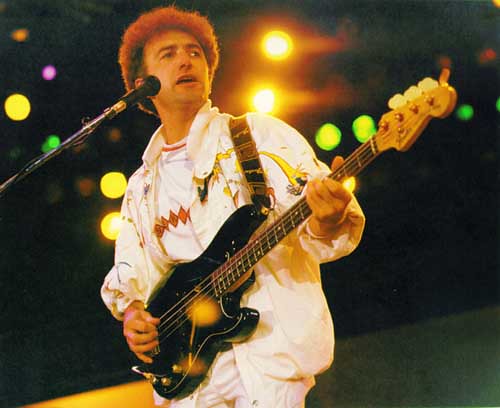
2. **The Maiden Voyage: Recording the Debut and Seeking a Record Deal (1971-1973)**February 1971 marked a crucial turning point with the arrival of John Deacon. An experienced bassist, his quiet demeanor perfectly complemented the band’s dynamic, and his skills in electronics proved invaluable. On July 2, Queen performed their first show with the classic lineup of Mercury, May, Taylor, and Deacon at a Surrey college outside London, cementing the quartet that would conquer the world.
Brian May took the initiative, contacting Terry Yeadon, an engineer at Pye Studios where Smile had recorded. Yeadon, who had since moved to De Lane Lea Studios’ new Wembley premises, offered Queen a unique opportunity: they could record some demos in exchange for testing the studio’s new equipment and recording rooms. This unexpected arrangement provided the band with essential studio time they might not have otherwise afforded.
During these sessions, Queen recorded five of their original songs: “Liar,” “Keep Yourself Alive,” “Great King Rat,” “The Night Comes Down,” and “Jesus.” Producers John Anthony and Roy Thomas Baker visited the band during this time and were particularly impressed by “Keep Yourself Alive.” They began actively promoting the band to various record companies, sensing their raw potential.
Promoter Ken Testi managed to pique the interest of Charisma Records, who offered Queen an advance of around £25,000. However, the band declined, discerning that Charisma would prioritize Genesis. Testi then initiated discussions with Norman Sheffield of Trident Studios, which led to a management deal under Neptune Productions, a Trident subsidiary. This arrangement allowed Queen to utilize Trident’s cutting-edge recording facilities, used by established musicians, during off-peak hours—a priceless opportunity that Roger Taylor later described as “gold dust.”
Despite finishing their debut album in January 1972, Queen still lacked a record contract. To generate interest, Trident organized showcase gigs, including one at The Pheasantry on November 6 and another at the Marquee Club on December 20. These performances were vital in demonstrating their live prowess and the strength of their unreleased material, proving that their studio work was ready for a wider audience.
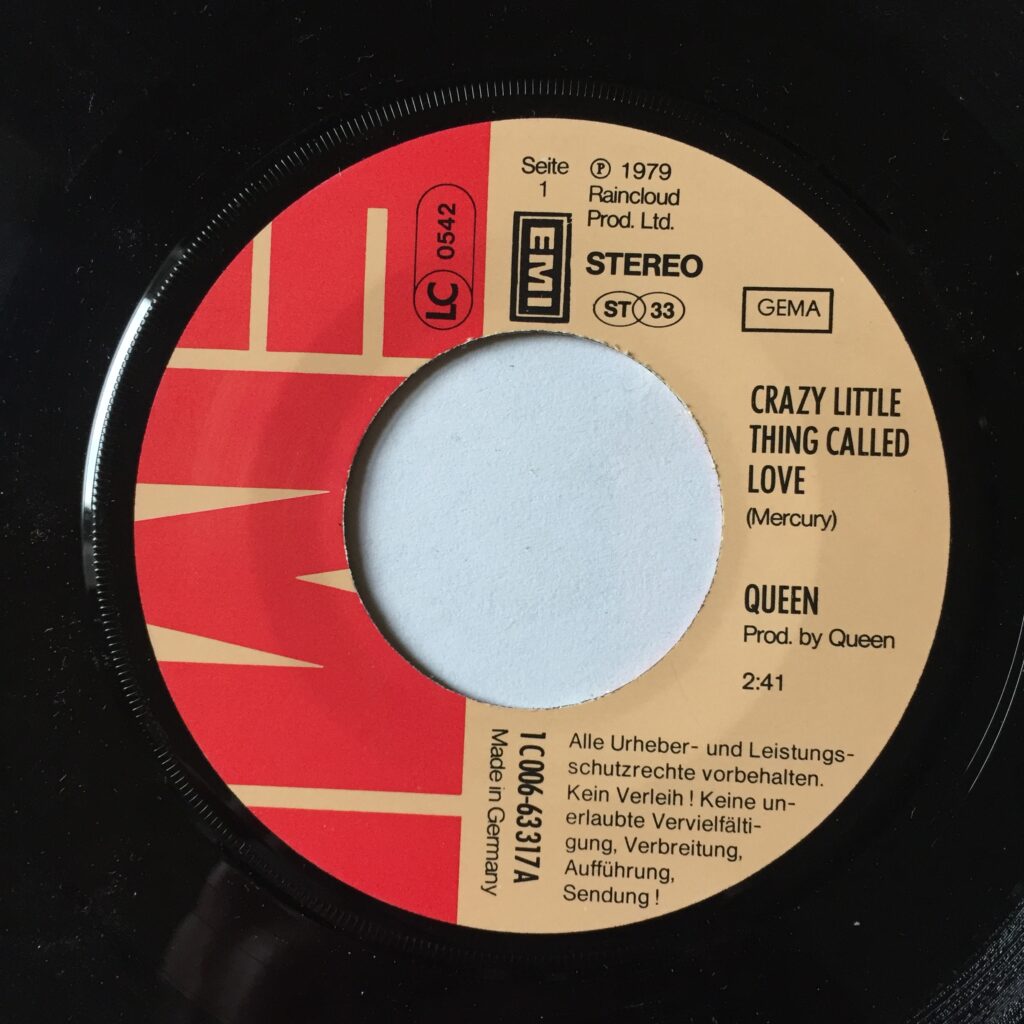
3. **Queen II: Forging a Signature Sound and First Chart Success (1973-1974)**In February 1973, Queen promoted their unreleased album on BBC Radio 1, a significant step even without a formal record deal. The following month, Trident successfully brokered a deal with EMI Records, marking a major milestone for the band. The single “Keep Yourself Alive” was released on July 6, with the album *Queen* following a week later, featuring a live shot of Mercury on stage captured by Taylor’s friend Douglass Puddifoot on its cover
The debut album was generally well-received by critics. Gordon Fletcher of *Rolling Stone* lauded it as “superb,” and Chicago’s *Daily Herald* called it an “above-average debut.” Despite the critical praise, *Queen* drew little mainstream attention, and “Keep Yourself Alive” sold poorly. Retrospectively, however, it is celebrated as the album’s highlight, with *Rolling Stone* ranking it 31st in the “100 Greatest Guitar Songs of All Time” in 2008, praising it for cramming “an entire album’s worth of riffs into a single song.” The album eventually achieved gold certification in both the UK and the US.
The group quickly began recording their second album, *Queen II*, in August 1973, now with the benefit of regular studio time, allowing them to fully exploit the available facilities. Brian May crafted a multi-layered guitar introduction titled “Procession,” while Freddie Mercury penned “The Fairy Feller’s Master Stroke,” inspired by Richard Dadd’s painting. The remainder of the year saw Queen touring the UK, supporting Mott the Hoople and steadily building their audience. This culminated in two sold-out shows at the Hammersmith Odeon on December 14, playing to 7,000 enthusiastic fans.
January 1974 saw Queen playing the Sunbury Pop Festival in Australia, where they were met with jeers and taunts due to their late arrival and the audience’s preference for local acts. Undeterred, Mercury famously declared before leaving, “when we come back to Australia, Queen will be the biggest band in the world!” This audacious promise would eventually prove prophetic. *Queen II* was released in March, featuring Mick Rock’s iconic Dietrich-inspired image of the band on the cover, an image that would later serve as inspiration for the “Bohemian Rhapsody” music video production.
The album marked Queen’s first entry into the UK charts, reaching number five, and the Mercury-written lead single “Seven Seas of Rhye” climbed to number 10 in the UK, delivering the band their first true hit. *Queen II* introduced a distinct ‘layered’ sound that would become their hallmark, characterized by long, complex instrumental passages, fantasy-themed lyrics, and impressive instrumental virtuosity. It also included the six-minute epic “The March of the Black Queen,” a chorus-less track that showcased their progressive rock leanings. While critical reaction was mixed—the *Winnipeg Free Press* dubbed it an “over-produced monstrosity”—*AllMusic* has since highlighted it as a favorite among hardcore fans, and it is the first of three Queen albums featured in the influential book *1001 Albums You Must Hear Before You Die*.
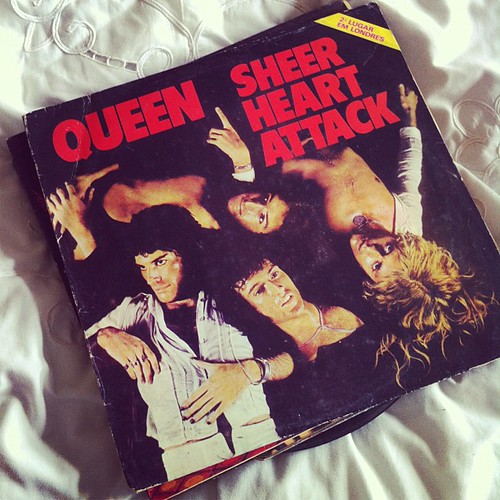
4. **Sheer Heart Attack: Expanding Horizons and International Breakthrough (1974)**May 1974 presented a significant challenge for the band as Brian May collapsed a month into their first US tour, opening for Mott the Hoople. Diagnosed with hepatitis, his illness forced the cancellation of their remaining dates, a setback just as their international profile was beginning to rise. Despite May’s absence during the initial stages of recording their third album, he rejoined midway through the process, bringing his unique guitar contributions back to the fold.
Released in 1974, *Sheer Heart Attack* quickly ascended to number two in the UK charts and achieved significant sales across Europe, also earning gold status in the US. This album marked Queen’s genuine first experience of international success, making them a hit on both sides of the Atlantic. It was a crucial step in cementing their global appeal, demonstrating that their unique sound could resonate with diverse audiences.
The album showcased Queen’s burgeoning musical adventurousness, experimenting with an array of genres. Listeners could find elements of British music hall, heavy metal, tender ballads, ragtime, and even Caribbean influences interwoven throughout the tracks. This eclectic approach proved the band’s versatility and their refusal to be confined to a single musical category, a trait that would define much of their career.
Brian May’s contributions included “Now I’m Here,” a song that poignantly documented the group’s curtailed American tour, and “Brighton Rock,” which served as a dynamic vehicle for his renowned on-stage solo guitar spot. John Deacon penned his first song for the band, “Misfire,” while the live favorite “Stone Cold Crazy” was a collaborative effort, credited to the entire band. Freddie Mercury closed the album with “In the Lap of the Gods… Revisited,” a track designed with audience sing-alongs in mind for live performances, foreshadowing later anthems like “We Are the Champions.”
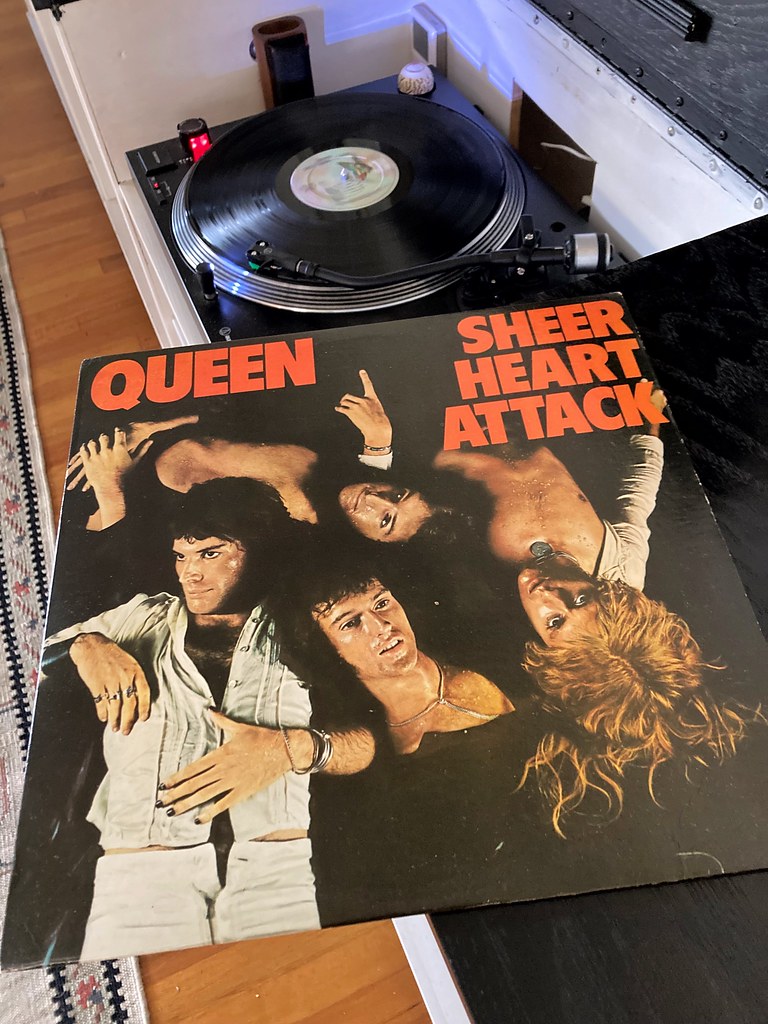
5. **A Night at the Opera: The Pinnacle of Ambitious Artistry (1975)**The single “Killer Queen,” penned by Mercury about a high-class prostitute, became an instant sensation. It soared to number two on the British charts and marked their inaugural US hit, reaching number 12 on the *Billboard* Hot 100. The song, partly recorded at Rockfield Studios in Wales, exemplified Mercury’s brilliance, blending camp, vaudeville, and British music hall with May’s distinctive guitar work and Mercury playing the grand piano. The album’s second single, “Now I’m Here,” also performed well, reaching number eleven.
*Sheer Heart Attack* garnered significant critical acclaim retrospectively. In 2006, *Classic Rock* ranked it number 28 in “The 100 Greatest British Rock Albums Ever,” and *Mojo* placed it at No. 88 in “The 100 Records That Changed the World” in 2007. It also holds the distinction of being the second of three Queen albums included in *1001 Albums You Must Hear Before You Die*.
Despite their burgeoning success, Queen faced considerable financial challenges due to their original contract with Trident. In January 1975, while embarking on a world tour—headlining in the US and playing in Canada and Japan for the first time—they were still living in relative poverty. John Deacon was even refused money for a house deposit. This difficult situation led EMI to contact lawyer Jim Beach to help extricate them from the onerous Trident deal.
After an acrimonious split, the band successfully negotiated out of their contract in August. They explored new management options, even considering an offer from Led Zeppelin’s manager, Peter Grant, before ultimately choosing Elton John’s manager, John Reid. Reid’s clear directive was instrumental: “I’ll take care of the business; you make the best record you can.” This newfound freedom allowed Queen to channel their energies entirely into their next creative endeavor.
Emboldened by their new management and artistic autonomy, Queen embarked on recording their fourth album, *A Night at the Opera*, borrowing its title from the famous Marx Brothers movie. This album became the most expensive ever produced at the time, costing an astonishing £40,000 and utilizing three different studios. Like its predecessor, it was a tapestry of diverse musical styles and pushed the boundaries of stereo sound experimentation.
Freddie Mercury’s contributions were central, including the biting opening track “Death on Two Legs,” a sharp critique aimed at perceived wrongdoers, later dedicated to Trident in concerts. He also penned the camp vaudeville numbers “Lazing on a Sunday Afternoon” and “Seaside Rendezvous.” Brian May delivered the eight-minute epic “The Prophet’s Song,” featuring a complex canon in its middle section, layering simple phrases to create a full-choral sound. The album also showcased Mercury’s poignant ballad, “Love of My Life,” enhanced by a harp and rich, overdubbed vocal harmonies.
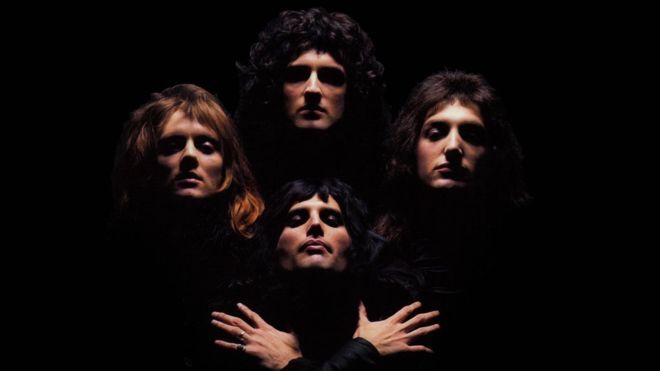
6. **The Unprecedented Impact of “Bohemian Rhapsody” (1975)**The album’s most celebrated song, “Bohemian Rhapsody,” emerged from musical fragments Mercury had developed during his time at Ealing College. Brian May recalled Mercury’s vision: “He knew exactly what he was doing. It was Freddie’s baby. We just helped him bring it to life.” Mercury famously played a run-through on piano in his flat, pausing to declare, “This is where the opera section comes in.” The band initially grappled with how to piece together its intricate structure.
During recording, producer Roy Thomas Baker wisely left a 30-second section of tape specifically for the operatic vocals. The sheer ambition of the track led to a staggering 180 overdubs, pushing the original tape to its physical limits. EMI initially balked at releasing it as a single, deeming it too long and demanding a radio edit, a demand Queen firmly refused, convinced of the song’s integral structure.
Freddie Mercury’s close friend and advisor, Capital London radio DJ Kenny Everett, played a pivotal role in the song’s meteoric rise. Given a promotional copy with a strict instruction not to play it, Everett defied the odds, spinning it fourteen times over a single weekend. Capital’s switchboard was subsequently overwhelmed with callers clamoring to know when the song would be released, generating an undeniable public demand that EMI could no longer ignore.
Forced by public outcry, EMI released “Bohemian Rhapsody,” which promptly soared to number one in the UK for an astonishing nine weeks. It stands as the third-best-selling single of all time in the UK, surpassed only by charity singles. Crucially, it remains the best-selling commercial single in the UK. Its global appeal was also immense, reaching number nine in the US, and a 1992 re-release famously hit number two on the *Billboard* Hot 100 for five weeks.
“Bohemian Rhapsody” achieved a truly unique feat by becoming the only single ever to sell a million copies on two separate occasions and the sole single to be a Christmas number one twice in the UK. Its enduring legacy is further underscored by its consistent recognition in various polls, having been voted the greatest song of all time in three different surveys, a testament to its unparalleled musical and cultural impact.
The song was brilliantly promoted with a music video directed by Bruce Gowers, who had previously filmed several of Queen’s live concerts. The band strategically opted for a video to avoid conflicting tour dates with appearances on the BBC’s *Top of the Pops*, and also recognizing the absurdity of miming such a complex track live. Filmed at Elstree Studios in Hertfordshire, the video cost £3,500—five times the typical promotional budget—and was shot in just three hours.
Notably, the operatic section of the video featured a clever reprise of the *Queen II* album cover, with the band members’ heads animated. *Rolling Stone* profoundly stated that the video’s “influence cannot be overstated, practically inventing the music video seven years before MTV went on the air.” *The Guardian*, ranking it number 31 on their list of 50 key events in rock music history, asserted that it “ensured videos would henceforth be a mandatory tool in the marketing of music.” Radio broadcaster Tommy Vance encapsulated its power, saying, “It became the first record to be pushed into the forefront by virtue of a video. Queen were certainly the first band to create a ‘concept’ video. The video captured the musical imagery perfectly. You cannot hear that music without seeing the visuals in your mind’s eye.”
*A Night at the Opera* itself proved incredibly successful in the UK and went triple platinum in the United States. In a 2004 Channel 4 poll, the British public voted it the 13th-greatest album of all time. Its international acclaim continued with a Guinness worldwide poll ranking it the 19th-greatest, and an ABC poll placing it as the 28th-greatest of all time by the Australian public. Critically, it has consistently appeared in “greatest albums” lists, including number 16 in *Q* magazine’s “The 50 Best British Albums Ever” and number 230 on *Rolling Stone*’s “The 500 Greatest Albums of All Time.” It is also the third and final Queen album to be featured in *1001 Albums You Must Hear Before I Die*.
The album also yielded another major hit with John Deacon’s “You’re My Best Friend,” which peaked at number sixteen on the US *Billboard* Hot 100 and became a worldwide top-ten success. The band’s *A Night at the Opera Tour* commenced in November 1975, spanning Europe, the US, Japan, and Australia. A special concert at the Hammersmith Odeon on December 24 was broadcast live on the BBC’s *The Old Grey Whistle Test*, with the audio later aired on BBC Radio 1. This iconic performance became one of the band’s most popular bootleg recordings for decades before its official release in 2015, solidifying its place in Queen’s rich live history.
Read more about: The Formative Years of a Rock Dynasty: Queen’s Ascent to Global Stardom, 1968-1975
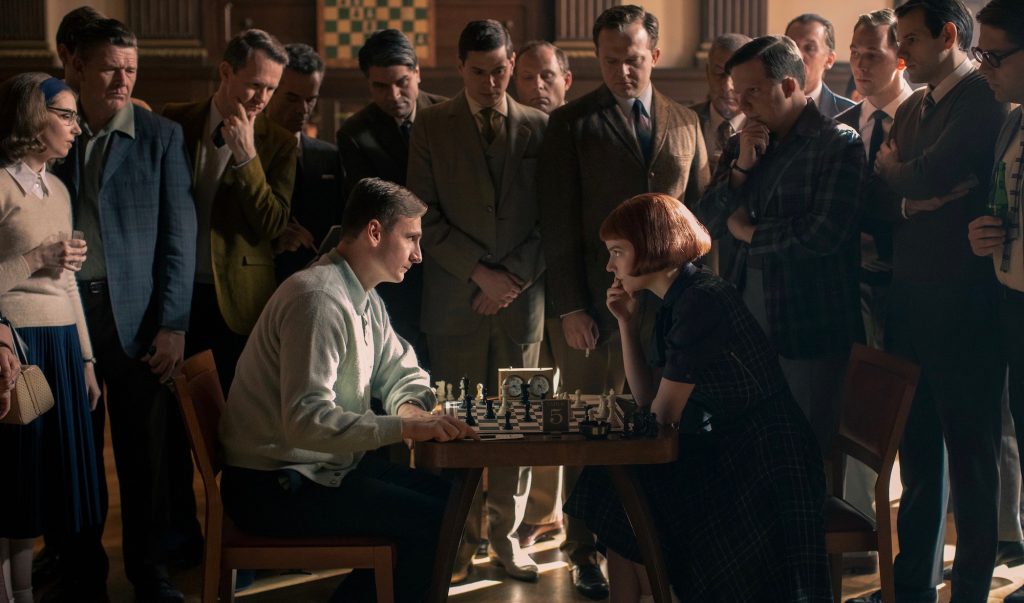
7. **A Day at the Races: Solidifying Success and Breaking Records (1976)**Following the global triumph of *A Night at the Opera*, Queen swiftly returned to the studio in 1976 to record *A Day at the Races*. Often considered a companion piece or sequel to its illustrious predecessor, this album continued the tradition of borrowing its title from a Marx Brothers movie and featured a strikingly similar cover, a variation on the iconic Queen logo. The album was self-produced by the band, with valuable assistance from Mike Stone, who also lent his voice to several backing vocals.
The album delivered another significant hit with “Somebody to Love,” a gospel-inspired track showcasing the masterful vocal layering of Mercury, May, and Taylor, meticulously multi-tracking their voices to create the illusion of a full gospel choir. This powerful anthem ascended to number two in the UK charts and reached number thirteen in the US, further cementing their chart presence. In contrast, Brian May’s “Tie Your Mother Down” offered one of the band’s heaviest sonic explorations, quickly becoming a high-energy staple of their electrifying live performances.
Critically and commercially, *A Day at the Races* proved to be a resounding success, reaching the coveted number one spot in both the UK and Japan, while also climbing to number five in the US. This consistent performance underscored Queen’s ability to maintain their artistic integrity and commercial appeal after their breakthrough. A landmark moment for the band came on September 18, 1976, when they played a free concert in London’s Hyde Park, organized by entrepreneur Richard Branson.
This historic event set an attendance record for the park, with an astonishing 150,000 people confirmed in the audience, a true testament to their rapidly expanding popularity. Despite the massive success, the band’s late arrival onstage meant they ran out of time for an encore, with police famously informing Freddie Mercury that he would face arrest if he attempted to return. Brian May particularly cherished the gig, reflecting on his own experiences attending earlier concerts at the park, like the one featuring Pink Floyd in 1968.

8. **News of the World: Anthems and Global Icon Status (1977)**Building on their momentum, Queen released their sixth studio album, *News of the World*, in 1977, an album that would become an undeniable cornerstone of rock history. This record swiftly achieved immense commercial success, going four times platinum in the US and twice platinum in the UK, solidifying their status as global rock heavyweights. It featured a collection of tracks meticulously crafted for exhilarating live performance, including two of rock’s most universally recognized and enduring anthems.
Among these were the iconic “We Will Rock You” and the soaring rock ballad “We Are the Champions,” both of which transcended the realm of music to become ubiquitous international sports anthems, instantly recognizable across stadiums and arenas worldwide. “We Are the Champions” particularly resonated, climbing to number four in the US, cementing its place as a powerful declaration of triumph and unity. These songs tapped into a collective human experience, making them timeless.
The accompanying *News of the World Tour* commenced in November 1977, dazzling audiences with its sheer scale and precision. Robert Hilburn of the *Los Angeles Times* lauded this concert tour as the band’s “most spectacularly staged and finely honed show,” highlighting their meticulous attention to visual presentation alongside their musical prowess. The tour included two more sold-out shows at New York’s Madison Square Garden, further testament to their enduring appeal in America.
In recognition of their remarkable achievements, Queen received the prestigious Madison Square Garden Gold Ticket Award in 1978, celebrating their accomplishment of surpassing 100,000 unit ticket sales at the legendary venue. This period also saw a notable cultural footnote: Queen was originally slated to appear on London’s *Today* programme on December 1, 1976, but their last-minute cancellation led to their EMI labelmates, the Sex Pistols, notoriously giving their expletive-laden interview with Bill Grundy.
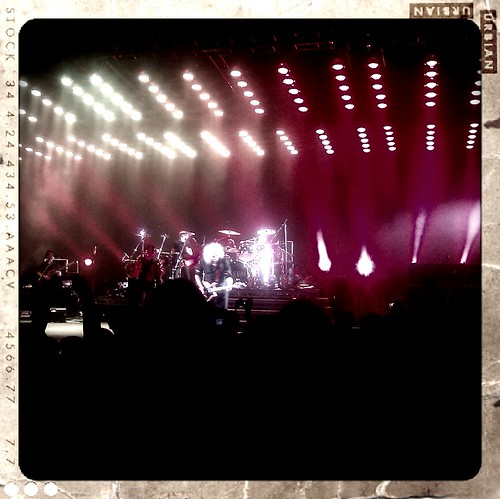
9. **Jazz, Live Killers, and “Crazy Little Thing Called Love” (1978-1979)**In 1978, Queen unleashed *Jazz*, an album that continued their exploration of diverse musical landscapes, reaching number two in the UK and number six on the *Billboard* 200 in the US. This album featured the memorable hit singles “Fat Bottomed Girls” and “Bicycle Race,” famously released together on a double-sided record, showcasing the band’s playful and energetic side. While initial critical reviews for *Jazz* were somewhat mixed, retrospective assessments have largely been more favorable, recognizing its unique contributions to their discography.
Another standout track from *Jazz*, “Don’t Stop Me Now,” exemplifies the band’s exuberant vocal harmonies and Freddie Mercury’s irrepressible energy, becoming a beloved fan favorite and a testament to their vibrant musicality. This period saw Queen tirelessly touring across the US and Canada in 1978, before dedicating much of 1979 to extensive tours throughout Europe and Japan, further solidifying their global fanbase and reputation as an unmissable live act.
The culmination of their rigorous touring schedule was the release of their first live album, *Live Killers*, in 1979. This album quickly achieved double-platinum status in the US, capturing the raw power and theatricality of their concerts for audiences worldwide. It was a testament to their undeniable stage presence and the enduring appeal of their live performances.
Towards the end of 1979, Queen released the hugely successful single “Crazy Little Thing Called Love.” This rockabilly-inspired track, delivered in the distinctive style of Elvis Presley, proved to be an instant global sensation. It swiftly climbed into the top 10 in numerous countries, sensationally topping the Australian ARIA Charts for seven consecutive weeks, and marking Queen’s first number one single in the US, where it dominated the *Billboard* Hot 100 for an impressive four weeks.
Notably, Freddie Mercury, who had written the song on guitar and played rhythm on the recording, embraced the rhythm guitar role when performing the song live, marking the very first time he played guitar in concert. This period also included a significant performance on December 26, 1979, when Queen played the opening night at the Concert for the People of Kampuchea in London, accepting an invitation from event organizer Paul McCartney, wrapping up their “Crazy Tour of London” with a charitable flourish.

10. **The Game: Synthesizers and a New Era of Hits (1980)**Queen ushered in the 1980s with *The Game*, an album that marked a pivotal stylistic evolution for the band and delivered two of their most enduring number one singles in the US. Both “Crazy Little Thing Called Love,” already a massive success, and the funk-infused “Another One Bites the Dust” topped the *Billboard* Hot 100, showcasing the band’s versatile appeal across different genres. The latter, in particular, received a legendary boost from none other than Michael Jackson.
After attending a Queen concert in Los Angeles, Jackson reportedly suggested to Freddie Mercury backstage that “Another One Bites the Dust” should be released as a single. This astute advice proved prophetic, as the track went on to spend three weeks at number one in October 1980, becoming a global phenomenon. *The Game* itself was a colossal success, topping the *Billboard* 200 for five weeks and selling over four million copies in the US, cementing its place as one of Queen’s most commercially successful albums.
A significant, albeit subtle, shift in the band’s sound was introduced with *The Game*: it marked the first appearance of a synthesizer on a Queen album. Prior to this, their albums famously bore a distinctive “No Synthesisers!” sleeve note. This note, widely perceived as an anti-synth stance by the band, was later clarified by producer Roy Thomas Baker to be an effort to emphasize that the albums’ complex, multi-layered solos were achieved solely with guitars, not electronic instruments, as record company executives frequently assumed.
Further highlighting their sustained popularity, Queen performed three sold-out shows at Madison Square Garden in September 1980. That same year, they also released the critically acclaimed and commercially successful soundtrack they had recorded for the science fiction film *Flash Gordon*, demonstrating their ability to blend their rock prowess with cinematic scoring. Their continued impact was recognized at the 1981 American Music Awards, where “Another One Bites the Dust” won the award for Favorite Pop/Rock Single, and Queen received a nomination for Favorite Pop/Rock Band, Duo, or Group.

11. **Global Domination: South America, Bowie, and Greatest Hits (1981)**February 1981 saw Queen embark on a groundbreaking leg of *The Game Tour* in South America, making them the first rock band from outside the Americas to perform in stadiums across Latin America. This ambitious venture placed them squarely “under the spotlight from all quarters,” as *Classic Rock* magazine noted, with the entire music industry keenly observing if their bold plans would come to fruition. Tom Pinnock of *Melody Maker* eloquently described Queen’s achievement, stating they “chalked up a major international ‘first’ by becoming the band to do for popular music in South America what The Beatles did for North America 17 years ago.”
Millions of Argentinians and Brazilians, who had long been deprived of top British or American bands, extended a heroic welcome, profoundly altering “the course of pop history in this uncharted territory of the world rock map.” The tour included five shows in Argentina, one of which drew a staggering 300,000-strong audience in Buenos Aires, setting a new record for the largest single concert crowd in Argentine history. In Brazil, they played to over 131,000 people on the first night at the Morumbi Stadium in São Paulo, establishing what was then the largest paying audience for a single band anywhere in the world. The promoter of their Buenos Aires shows remarked that “Queen have liberated this country, musically speaking.”
During these South American concerts, the ballad “Love of My Life,” topping the charts in Brazil and Argentina, became an unexpected highlight. Freddie Mercury would famously stop singing, conducting the vast audiences as they passionately took over, demonstrating their perfect grasp of the English lyrics. Later that year, Queen also performed for over 150,000 fans across shows in Monterrey and Puebla, Mexico, despite some logistical challenges and audience behavior, alongside two successful nights at the Montreal Forum in Canada.
A landmark collaboration occurred in 1981 when Queen worked with David Bowie on the single “Under Pressure.” This spontaneous first-time partnership happened serendipitously when Bowie dropped by the studio while Queen was recording. Mercury and Bowie each recorded their vocals separately, contributing individual ideas that coalesced into a dynamic, chart-topping hit in the UK.
This period was further celebrated in October with the release of their first compilation album, *Greatest Hits*, which showcased the group’s most iconic tracks from 1974 to 1981. It became the best-selling album in UK chart history, the only album to sell over seven million copies in the UK, and by July 2022, had spent over 1000 weeks in the UK Album Chart. Globally, it has sold over 25 million copies worldwide and is certified nine times platinum in the US, illustrating its unparalleled cultural penetration.

12. **Hot Space, The Works, and Shifting Global Dynamics (1982-1984)**The year 1982 brought forth *Hot Space*, an album that marked a notable departure from Queen’s characteristic 1970s sound, venturing instead into a vibrant fusion of pop rock, dance, disco, funk, and R&B. Much of this album was recorded in Munich during what Brian May described as “a difficult period” for the band, a time of internal friction where “we hated each other for a while,” and they were “not getting along together,” each having “different agendas.”
While Freddie Mercury and John Deacon embraced these new soul and funk influences, Roger Taylor and Brian May were less enthusiastic, openly critical of the impact Mercury’s personal manager, Paul Prenter, had on him. Producer Mack noted Prenter’s disdain for rock music and his pervasive influence during the *Hot Space* sessions, a sentiment echoed by May, who chastised Prenter for dismissing the vital role of radio stations. Roadie Peter Hince viewed Mercury’s loyalty as misguided. *Q* magazine would later list *Hot Space* as one of the top fifteen albums where great rock acts lost their way, yet it still reached number four in the UK.
Despite its UK chart success, the subsequent *Hot Space Tour* encountered some audience resistance to the new material, with a defiant Mercury famously addressing hecklers in Frankfurt: “If you don’t want to listen to it, go home!” Queen performed their last two gigs in the US with Freddie Mercury on lead vocals on September 14 and 15, 1982, at The Forum in Inglewood, California. Following this tour, the band largely ceased touring North America, a decline partially attributed to homophobia, as Mikal Gilmore for *Rolling Stone* noted, with fans sometimes displaying hostility towards Mercury’s perceived identity.
After the *Hot Space Tour* concluded in Japan in November 1982, Queen took a significant break. They reconvened nine months later, releasing their eleventh studio album, *The Works*, in February 1984. This album spawned hit singles like “Radio Ga Ga,” “Hammer to Fall,” and “I Want to Break Free.” While *Rolling Stone* hailed it as “the Led Zeppelin II of the eighties” and it went triple platinum in the UK, its US performance was hampered by issues with their new label, Capitol Records, and particularly by the controversial music video for “I Want to Break Free.”
The video, a humorous spoof of the British soap opera *Coronation Street* featuring the band in drag, was banned by MTV in the US, despite Roger Taylor’s explanation that “We wanted people to know that we didn’t take ourselves too seriously, that we could still laugh at ourselves.” That year also saw *The Works Tour* include nine sold-out dates in Sun City, South Africa, during the height of apartheid. This decision sparked international outrage and led to Queen’s placement on the United Nations’ blacklisted artists, a choice Roger Taylor later voiced regret for, acknowledging it was “kind of a mistake.”
From their humble beginnings in west London to becoming architects of stadium-rock anthems and global cultural phenomena, Queen’s journey through the late 1970s and early 1980s was a relentless pursuit of artistic innovation and groundbreaking live performance. They navigated internal tensions, embraced audacious musical shifts, and broke new ground in every corner of the globe, solidifying their legacy not just as a band, but as an undeniable force that forever changed the landscape of popular music. Their story is a powerful testament to vision, resilience, and the enduring magic of rock and roll.



